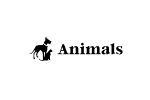The Saola: A Rare and Enigmatic Creature

Introduction
Welcome to the fascinating world of the Saola, a captivating creature shrouded in mystery and known for its elusive nature. In this article, we will delve into the depths of its existence, uncovering intriguing facts and shedding light on this enigmatic species. Get ready to embark on a journey to discover the secrets of the Saola, a rare gem of the animal kingdom.
The Saola: An Overview
The Saola, scientifically known as Pseudoryx nghetinhensis, is a remarkable bovine species that inhabit the lush and secluded forests of Vietnam and Laos. Often referred to as the "Asian unicorn" due to its elusive nature and unique appearance, the Saola stands as a symbol of both beauty and fragility.
Appearance

The Saola is a medium-sized mammal, characterized by its striking two parallel horns, reminiscent of a unicorn. The males have slightly larger horns than females, which can grow up to 20 inches in length. With a body length of approximately 6 feet and a height of around 3 feet at the shoulder, the Saola is a graceful and majestic creature.
Habitat
Saolas are endemic to the Annamite Range of Vietnam and Laos, where they dwell in dense forests and rugged terrain. These remote and inaccessible regions provide the Saola with a habitat of rich biodiversity, ensuring its survival amidst the diverse array of flora and fauna that call these forests home.
Diet and Behavior
The Saola is a herbivorous creature, primarily feeding on a variety of leaves, stems, and fruits found within its habitat. It is known to be a solitary animal, rarely seen in pairs or groups. The Saola is incredibly elusive and has mastered the art of camouflage, making it exceedingly difficult to spot in the wild.
Saola: The Symbol of Conservation
Conservation Status
The Saola holds the unfortunate distinction of being one of the most endangered large mammals in the world. It was discovered only in 1992, and since then, its population has faced rapid decline due to habitat loss, hunting, and fragmentation. The International Union for Conservation of Nature (IUCN) has categorized the Saola as critically endangered, with an estimated population of fewer than 100 individuals remaining in the wild.
Conservation Efforts
Efforts to protect and conserve the Saola have been undertaken by numerous organizations and governments. The Saola Working Group, a collaboration between conservation agencies, is at the forefront of these efforts. Their work includes raising awareness, conducting research, and implementing conservation strategies to ensure the survival of this magnificent creature.
Challenges and Hopes
Conserving the Saola poses significant challenges due to the species' elusive nature and the limited knowledge available about its biology and behavior. However, researchers and conservationists remain hopeful that concerted efforts will help prevent the Saola from disappearing forever. Public support, sustainable land management, and enhanced protection measures are crucial in securing a future for Saola.
FAQs about the Saola
Here are some frequently asked questions about the Saola, along with their answers:
- What is Saola's current population in the wild?
As of the latest estimates, the Saola population in the wild is believed to be fewer than 100 individuals, making it an incredibly endangered species.
- Why is the Saola referred to as the "Asian unicorn"?
The Saola earned the moniker "Asian unicorn" due to its elusive nature and the parallel horns that resemble the mythical creature, the unicorn.
- What are the main threats to the Saola's survival?
The main threats to the Saola's survival include habitat loss, hunting, and habitat fragmentation caused by human activities.
- How is the Saola adapting to its changing habitat?
The Saola's ability to adapt to its changing habitat is limited due to its specific ecological requirements. As forests are cleared for human activities, the Saola faces increased habitat fragmentation, leading to isolation and reduced access to resources.
- Are there any captive breeding programs for the Saola?
At present, there are no captive breeding programs for the Saola. Due to its elusive nature and the challenges of maintaining its specialized habitat, conservation efforts have primarily focused on protecting the remaining wild population and their natural habitat.
- How can individuals contribute to Saola conservation?
Individuals can contribute to Saola conservation by supporting organizations and initiatives dedicated to protecting endangered species. Raising awareness about the Saola's plight, reducing consumption of products linked to habitat destruction, and supporting sustainable land management practices are crucial steps toward ensuring the survival of the Saola.
Conclusion
The Saola stands as a testament to the incredible diversity and fragility of our planet's ecosystems. As we unravel the mysteries surrounding this enigmatic creature, it becomes clear that urgent and concerted action is needed to preserve its existence. The Saola's fate hangs in the balance, and it is up to us to protect and conserve this extraordinary species for future generations to appreciate and admire.
In a world where Saola's existence is threatened, we must act as responsible stewards of our environment. By safeguarding the Saola, we not only preserve a remarkable species but also protect the delicate balance of ecosystems and the myriad of life they sustain.
Let us join hands in raising awareness, supporting conservation efforts, and ensuring the survival of the Saola. Together, we can make a difference and secure a brighter future for this magnificent creature.




0 Comments